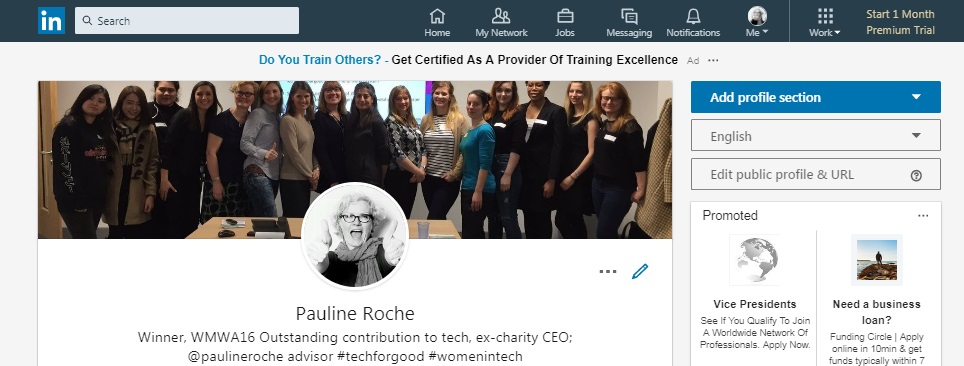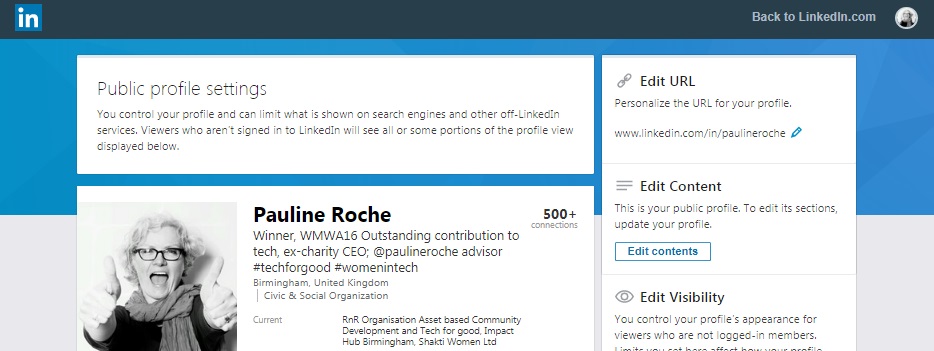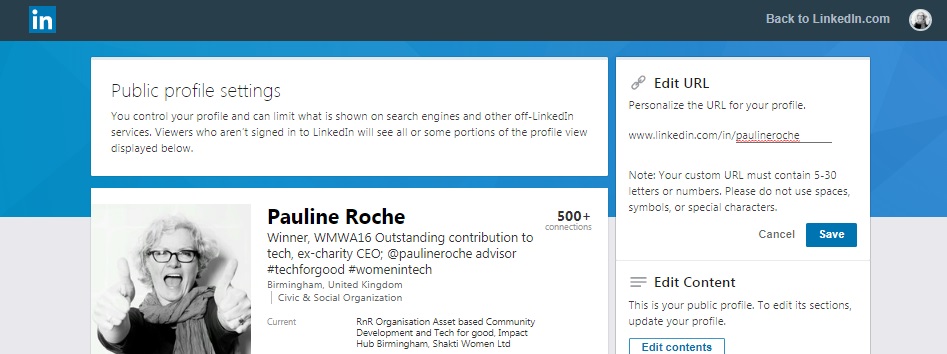Skip to content

post revised and updated Mar 2018
TWEAKING SOME PRACTICES: IT’S NOT ALL OR NOTHING
Having discussed wider and strategic issues in the previous two articles in this series (Smart Cities: smarter VCSE and Digital governance) we thought it necessary in this article to provide some practical guidance for organisations about how to incorporate such activities into their operational activities.
MODIFICATIONS
This is a process of making modifications and not necessarily making wholesale changes within your organisations or practice.
All organisations use some form of IT and therefore have an existing digital footprint (“one’s unique set of traceable digital activities, actions, contributions and communications that are manifested on the Internet or on digital devices” – Wikipedia).
Organisations use technology to monitor activity and therefore have access to specific and bespoke data.
WEBSITES
Websites are commonplace for most organisations and provide an excellent shop window for services and activities but do we make the best use of them, including to meet and collaborate with others?
DIGITAL TRANSFORMATION
As a sector we are now hearing a great deal about digital transformation – there are individuals and organisations that would advise us as to how to maximise our digital presence and data footprint but, unless organisations understand and own their own journey, they will not get the full benefit of the activity.
This article therefore provides some guidance as to how to review your activity
DO YOU KNOW WHAT DATA YOU KEEP?
Do you believe that you could improve how you manage your digital footprint?
Have you:
• Discussed with your board how technology might help with your work?
• Identified staff processes and progress?
• Identified any time constraints?
DIGITAL FOOTPRINT
• Does your digital footprint tell your story, celebrate your successes, and promote the numbers (people, events, networks, outcomes) you achieve, the issues you address, the impact you make?
• How do you market or promote your organisation?
Do you use leaflets, networking, blog, social media (Facebook, LinkedIn, Twitter), your website?
DIGITAL BY DESIGN
• What data do you keep about your activities, your users, your funding sources, other?
• How do you present your data? In annual reports, in funding applications, in other publications?
EXPLORING YOUR DIGITAL PRESENCE
We have divided an organisational digital presence into two distinct categories: fixed and fluid.
FIXED
Fixed digital includes websites and other IT processes. While the organisation has input into such activity, such resources can be inflexible, often purchased and maintained externally, used to promote and record organisational activity.
Web presence (fixed): What does it say about you, what information do you share, who is/are your target audience(s)? Develop a digital presence that tells your story, using narrative and data to represent impact and outcomes that are being achieved, and not just the information that represents how you fulfil contract obligations. What does your website say about your organisation?
FLUID
Social Media (fluid/flexible): Facebook, LinkedIn, Twitter, Instagram, WhatsApp.
What does your use of social media say about your organisation? With social media, often controlled and administered in-house, you have more flexibility over your digital presence and can use this media to portray more intimate insights into the organisation.
• Who manages your Facebook page, LinkedIn organisation page, Twitter account, website content? You, your staff and board can decide what stories get told using as many or as few of these platforms as make sense for your organisation – go where your users are.
• Do you measure the impact of your marketing? Blogpost reads, e-bulletin circulation, Facebook followers, leaflet distribution, LinkedIn connections, Twitter followers and re-tweets, website use – create a baseline using analytics, and monitor changes so you can stay in the loop.
PEER TO PEER LEARNING
You can interact with peers from your sector in this area at various events and meetup groups. Peer to peer learning with other non-profits about using technology to achieve outcomes is a great way to learn and practice new ideas in a safe and supportive environment.
EVENTS
BarCamp Non Profits unconference brings together people from tech and digital with people from non-profits (charity, academic, government, arts and culture, etc) to exchange ideas and learning, in London
Net Squared Midlands: tech for social good is a West Midlands-based tech for good group, part of Net Squared a global network, with regular free events for people interested in using web or mobile technology for social good. “NetSquared brings together nonprofits and activists, tech leaders and funders, and everyone who’s interested in using technology for social change”.
NFP tweetup – informal evenings of thought-provoking sessions, sharing and discussion focused on how not-for-profit organisations can make the best use digital media and technology, in London
Tech for Good Near You – online real time searchable map of tech for good events in the UK and Ireland
VCSSCamp (Voluntary and Community Sector Support) is an unconference for people from VCS local infrastructure organisations to meet and talk about the ways they use digital tools and technology in their work; annually in Birmingham, other places by arrangement with the organisers
MANAGING DATA
Data management tools (some are open source software) allow you to have more control over data about your organisation, your area and your issues.
Your organisation could make use of free online tools to find, manage and visualise data such as:
and
This is a process of making modifications and not necessarily making wholesale changes within your organisations or practice.
TIMELINE AND ACTIVITY
Engaging in the above activity may look like a great deal of commitment – it isn’t.
We would estimate a maximum commitment of 20-30 minutes per day. Make it a part of your weekly timetable and activities and develop an organisational ‘cultural’ commitment to increasing your digital and data literacy.
It is more about doing things differently, adjusting how you work, making more efficient use of IT and digital.
WHAT NEXT?
If you or your organisation wants some strategic help to take any of these ideas forward, please contact us for a discussion about how we might help you progress.
READING
OTHER ARTICLES IN SERIES:

I’ve been using LinkedIn, and advising people on how to use it, for 10 years.
I use it to find phone numbers or email addresses, to check out business contacts I’ve just met or I’m about to meet, to search for topics I’m researching, to check my dashboard and/or to post comments and content (including cross-posting content to my Twitter account).
In my opinion as a business advisor, if you have a LinkedIn profile, you should customise your LinkedIn public profile URL so your profile looks more professional, and so it can be found more easily by people with whom you want to connect.
INSTRUCTIONS ON HOW TO CUSTOMISE YOUR LINKEDIN PUBLIC PROFILE URL
-
As in the example below of my LinkedIn profile, go to your LinkedIn profile by clicking on your profile photo on the top right of the menu bar on the Home page and choose ‘View profile’.
-
Click on ‘Edit public profile & URL’ on the right side of the page

-
Navigate to the ‘Edit URL’ section on top right and click on the pencil icon by your current URL e.g. www.linkedin.com/in/paulineroche

-
Customise your URL by overwriting what’s there, including deleting the numbers which LinkedIn automatically adds when you sign up e.g. yourname.

Hint: If your name has already been taken by another LinkedIn member, use a middle name or initial to personalise yours.
Note: Your LinkedIn custom URL must contain 5-30 letters or numbers. LinkedIn does not allow you to use spaces, symbols, or special characters.
-
Save your new public profile URL by clicking on the SAVE button.
Note: You can change your URL up to 5 times within 6 months, but changing it may make it more difficult for people to find you.
NEXT STEPS
-
Add your customised LinkedIn URL to your email signature, and any other places where it might be useful e.g. on your business card and/or on your website.
-
If you like, let me know what you think of this tip, and if you have any other questions about LinkedIn.




